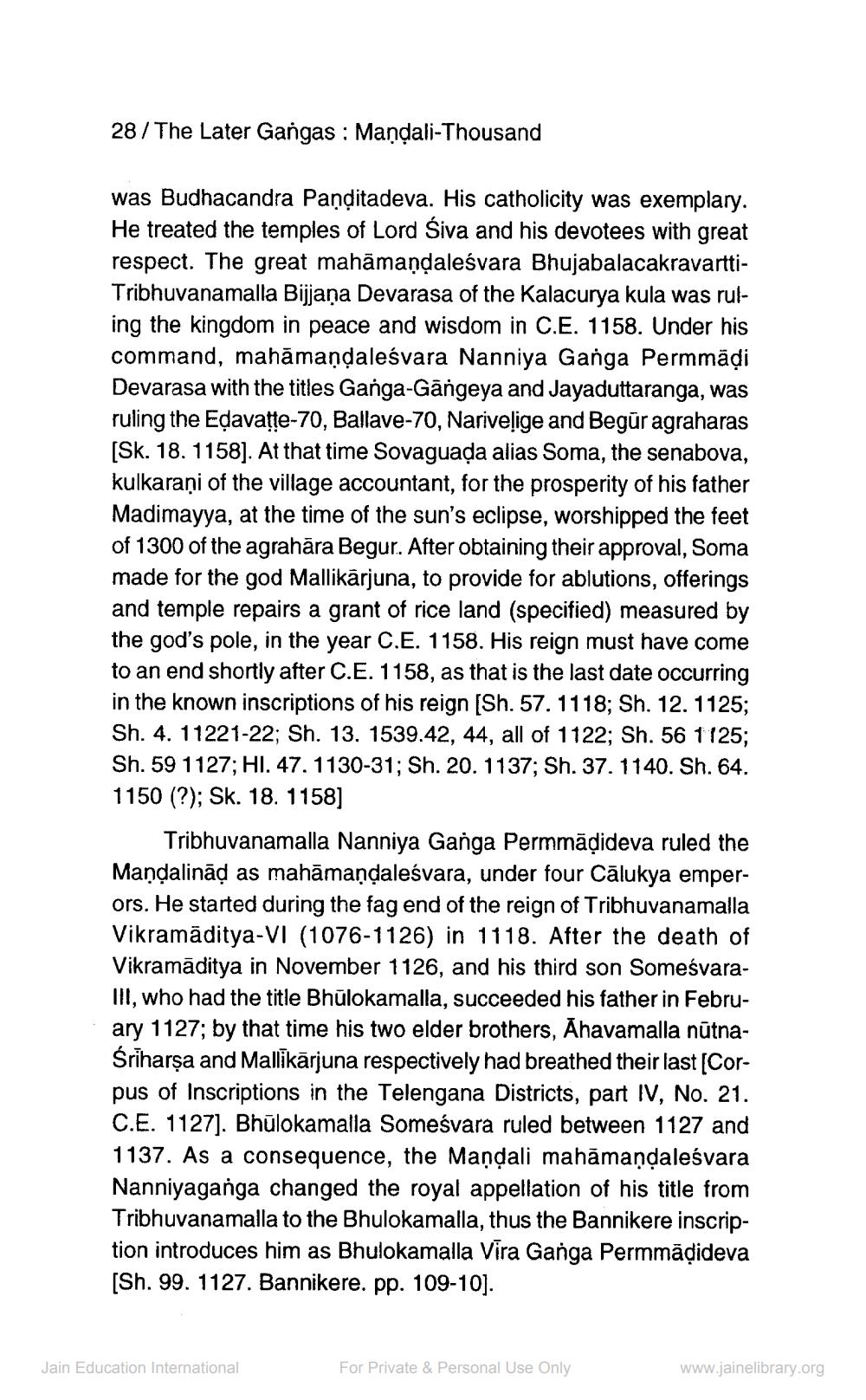________________
28/ The Later Gangas : Mandali-Thousand
was Budhacandra Panditadeva. His catholicity was exemplary. He treated the temples of Lord Siva and his devotees with great respect. The great mahamandalesvara BhujabalacakravarttiTribhuvanamalla Bijjana Devarasa of the Kalacurya kula was ruling the kingdom in peace and wisdom in C.E. 1158. Under his command, mahāmandalesvara Nanniya Ganga Permmāļi Devarasa with the titles Ganga-Gängeya and Jayaduttaranga, was ruling the Epavatte-70, Ballave-70, Narivelige and Begūr agraharas [Sk. 18. 1158]. At that time Sovaguada alias Soma, the senabova, kulkarani of the village accountant, for the prosperity of his father Madimayya, at the time of the sun's eclipse, worshipped the feet of 1300 of the agrahāra Begur. After obtaining their approval, Soma made for the god Mallikarjuna, to provide for ablutions, offerings and temple repairs a grant of rice land (specified) measured by the god's pole, in the year C.E. 1158. His reign must have come to an end shortly after C.E. 1158, as that is the last date occurring in the known inscriptions of his reign (Sh. 57. 1118; Sh. 12. 1125; Sh. 4. 11221-22; Sh. 13. 1539.42, 44, all of 1122; Sh. 56 1125; Sh. 59 1127; HI. 47. 1130-31; Sh. 20. 1137; Sh. 37. 1140. Sh. 64. 1150 (?); Sk. 18. 1158]
Tribhuvanamalla Nanniya Ganga Permmādideva ruled the Mandalinād as mahāmandalesvara, under four Cālukya emperors. He started during the fag end of the reign of Tribhuvanamalla Vikramāditya-VI (1076-1126) in 1118. After the death of Vikramāditya in November 112, and his third son SomeśvaraIII, who had the title Bhūlokamalla, succeeded his father in February 1127; by that time his two elder brothers, Ahavamalla nūtnaSriharsa and Mallīkārjuna respectively had breathed their last (Corpus of Inscriptions in the Telengana Districts, part IV, No. 21. C.E. 1127]. Bhūlokamalla Someśvara ruled between 1127 and 1137. As a consequence, the Mandali mahāmandalesvara Nanniyaganga changed the royal appellation of his title from Tribhuvanamalla to the Bhulokamalla, thus the Bannikere inscription introduces him as Bhulokamalla Vira Ganga Permmādideva [Sh. 99. 1127. Bannikere. pp. 109-10).
Jain Education International
For Private & Personal Use Only
www.jainelibrary.org




